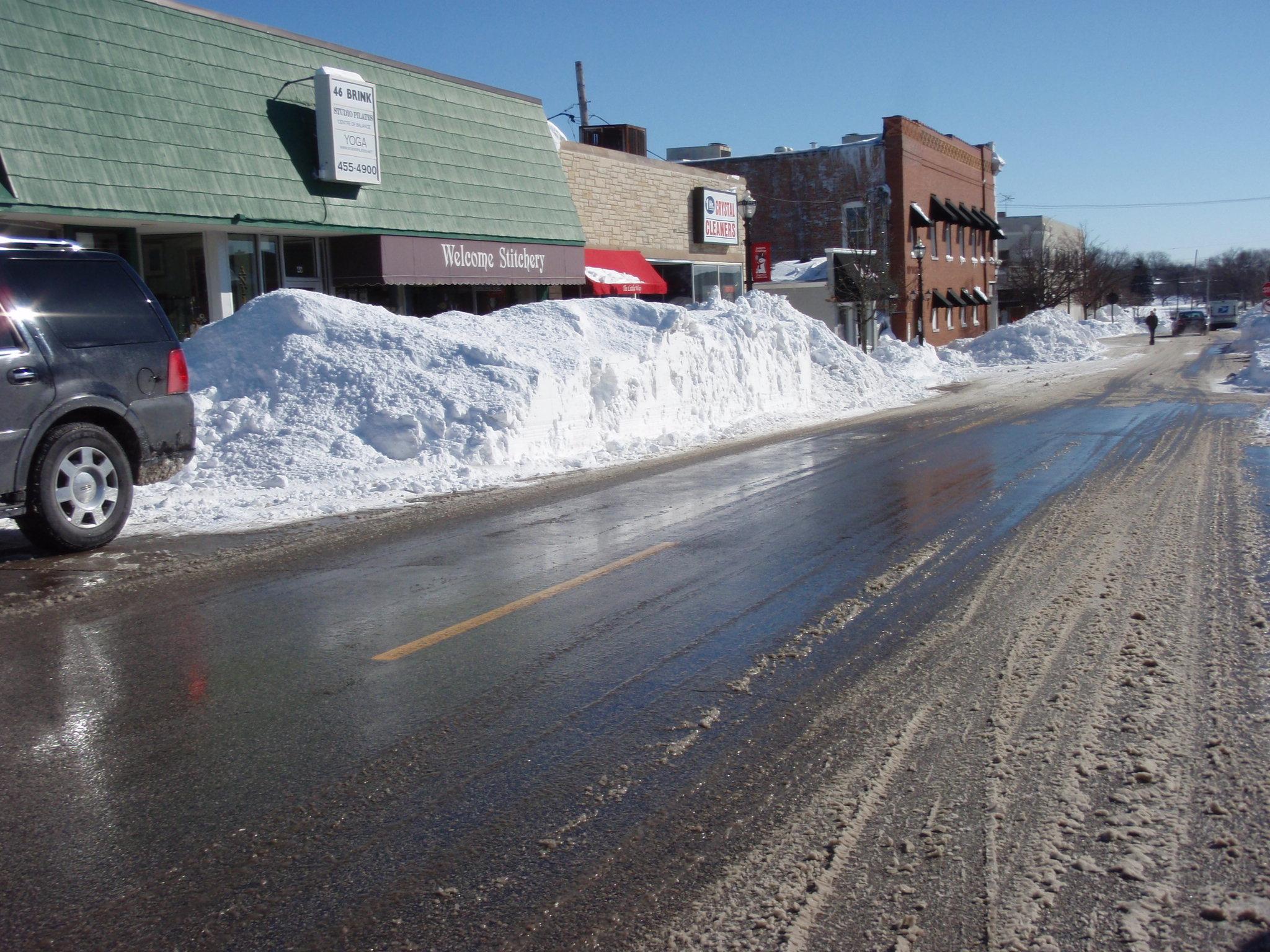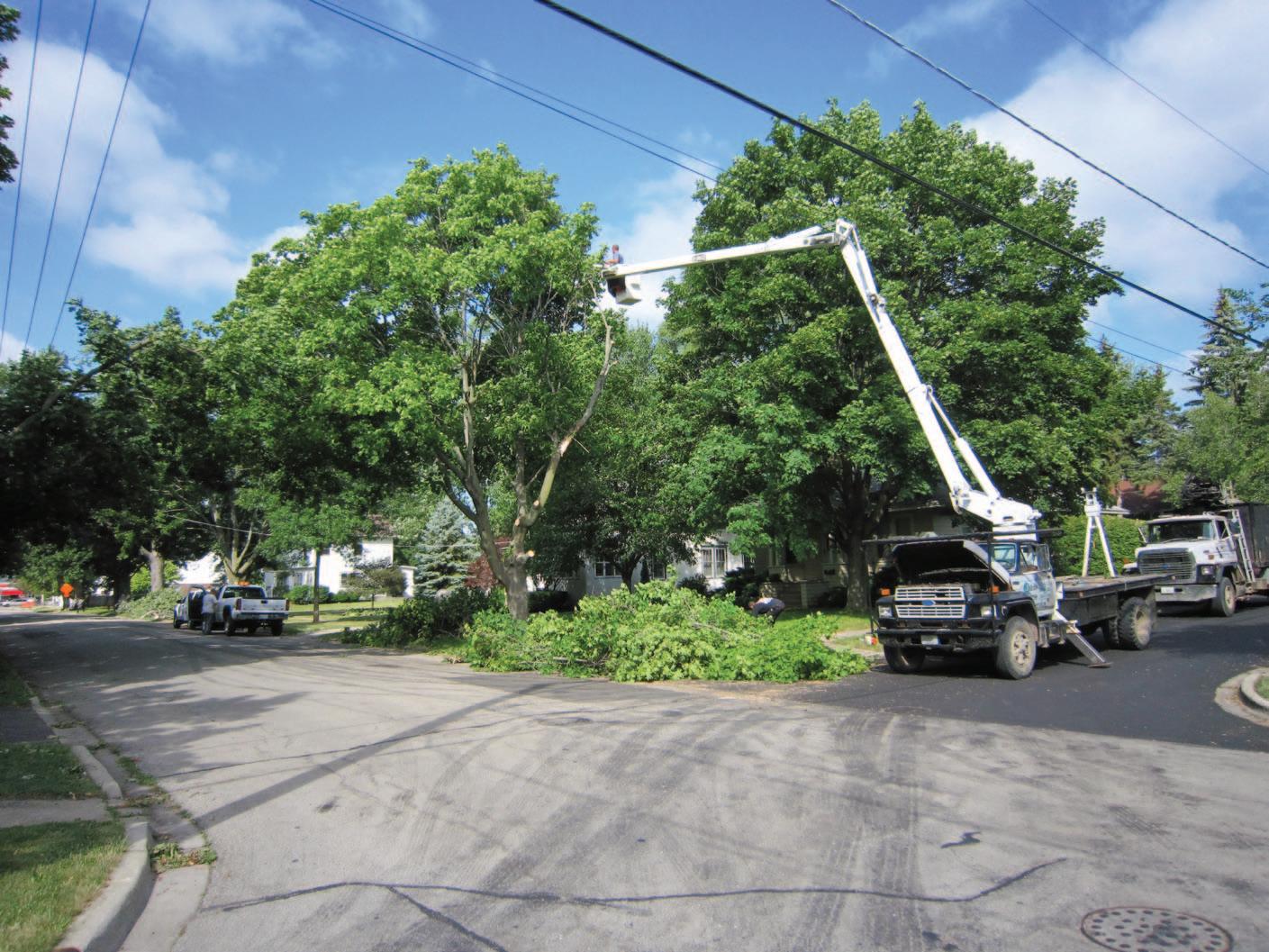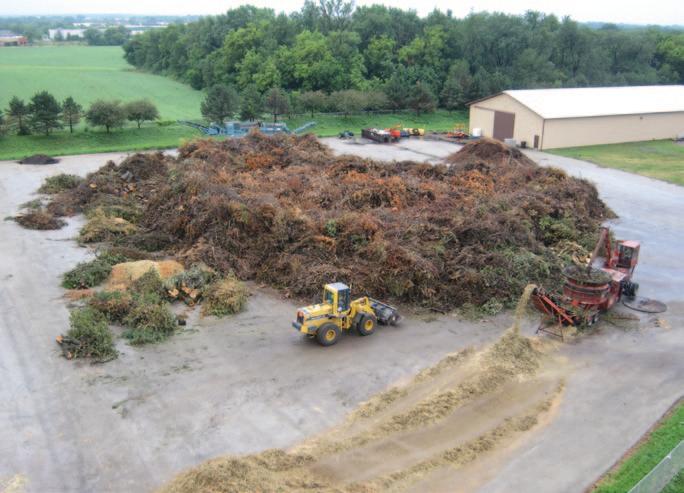
9 minute read
City of Crystal Lake 2011 blizzard and windstorm
A.J. Reineking, MPA
Assistant to the Director Public Works Department City of Crystal Lake, Illinois
Advertisement
This past year was an unusual year for extreme weather across the United States. From the devastating tornadoes that hit Joplin, Missouri, to drought-stricken areas of North Texas, public agencies were called on time and again to aid with disaster recovery. Crystal Lake, Illinois, a community of about 40,000 residents, at the far reaches of the Chicago suburbs, experienced two extraordinary weather events that tested the City’s emergency response forces. In February, Crystal Lake was pounded with 18.5 inches of snow that seemed to stop time for a day, except for local public works agencies and snow removal contractors. Again, in July a portion of Chicagoland was pelted with ripping winds that caused massive power outages and caused a completely new kind of trouble. What was the biggest difference between these two events? The weather forecasts were able to predict the 12-20 inches of snow days in advance. The windstorm was nothing but a small blip on the radar that didn’t look threatening. This massive windstorm caught us off guard and put us into a reactive state. In both events, strong leadership and quick action enabled the City to react quickly to changing conditions, establish a plan, and execute our mission.
A seeming ghost town
Snow was falling by early evening on February 1, 2011. For days, the weather had been forecast that northern Illinois would be hit hard with snow. As the first flakes were falling the City’s leadership team had already met to discuss the response plan. Fuel tanks were filled and the salt storage bins were topped off in anticipation of a long event. Accommodations were being made to turn the parts of City Hall into a makeshift dormitory for the plow operators. There was a high likelihood that anybody coming off shift and going home would not make it in the next day.
As the snow continued to fall throughout the evening, the city turned into a seeming ghost town. Most businesses closed early and residents had heeded the warning and stayed home. The lack of traffic made plowing easier despite the low visibility caused by the dense snow and high winds. As the night progressed, the snow continued to accumulate at a rate of 1.5 to 2 inches per hour with no signs of letting up.
Most jurisdictions around the city decided to halt their plowing operations and wait out the storm. Conditions were deemed too hazardous to continue plowing especially on the more open rural routes. Without snow being cleared from the state roads, several cars and trucks became stranded on the main state artery north of the city limits. The Public Works Department responded by sending supervisors and plow operators on rescue missions to get these motorists off the road and transport them to a preestablished warming facility nearby. Meanwhile, the leadership team decided to pull our crews off residential streets, and focus on the main routes to ensure that Public Works wouldn’t have to rescue their own plow drivers and
Work continued after the snow stopped falling to clean public streets and sidewalks and open the Municipal Complex.
Areas in town without a parkway to pile snow required snow to be trucked out to allow businesses to open.
Fallen branches during the windstorm were an immediate threat, but the hanging branches lingered in trees and required an ongoing cleanup program weeks after the storm.

emergency vehicles would have the best opportunity to respond in the event of an emergency.
When daylight came, and snow subsided, it was obvious that clearing the snow from our streets was going to be a bigger task than was originally predicted. Further, February 2 became a mass snow day for all area businesses, making it difficult to find food for the City workforce. After calling every local grocery store, we eventually found one that managed to open. Knowing that this store was closing soon, and unsure when more resources would be available, two pickup trucks were sent to load enough food for all emergency response personnel to eat three meals a day for the next two days.
While one team was working on feeding our forces, another was working on calling in reinforcements. We realized that we did not have the equipment to relocate this much snow from our downtown area or city parking lots without calling in large trucks and end loaders. While all roadways were passable by that evening, it took City crews and contracted operators a full week to clear intersections and cul-de-sacs, and essentially “dig-out” the community.
A massive windstorm
At 8:30 a.m. on Monday, July 11, 2011, the hastily opened Emergency Operations Center was bustling with activity. Police and fire crews were being dispatched all across town to address minor fires, ambulance calls and downed power lines. The phone lines were inundated with reports of trees down in streets and power outages, and the Public Works Department was preparing its crews and equipment for a long day. Forty-five minutes earlier, a massive windstorm had moved through Crystal Lake as it cut across the northern Chicago suburbs. The storm was brief, only lasting fifteen or twenty minutes, but it was ferocious, producing gusts up to 70 mph. Tree damage was widespread, and most of the City was left without power.
As the calls rolled in, it was apparent very quickly that we would not have the personnel to address each concern as it came in. Rather, the calls were manually plotted on a map of the city with a marker to track the destruction and determine critical areas. We had 40,000 residents performing recon (and later quality control) for us. Roadways with downed power lines were closed and our electric utility, Commonwealth Edison, was notified. Dump trucks that had been used for landscape work in the spring and summer months were recommissioned with their winter plows to clear debris from roadways. Loaders were dispatched throughout the city to clear large trees that fell due to the high winds.
By 9:30 a.m., Public Works Department utility crews were fully

deployed to keep the City’s water and sewer services operational. The City’s 19 lift stations, five water treatment plants, and three water towers were left without electricity. Backup generators were deployed quickly to these facilities to ensure they kept working. However, with a limited number of backup generators for lift stations this required round-the-clock operations to move the generators from station to station to ensure that a sewer backup would not occur.
As the level of tree damage was fully realized, the newly-hired Streets Superintendent quickly realized that he had neither the personnel nor equipment necessary to conduct a thorough cleanup. Like in the blizzard event five months earlier, the Public Works Department was immediately given authorization to use contractors for additional assistance. The first contractor arrived to assist by noon, with three additional contractors assisting throughout the week as the cleanup efforts persisted. By the end of the first day, all roadways were clear of trees.
Recognizing that parkway trees were not the only victims of the storm, the City announced a special curbside brush collection for residents. For the remainder of the week, the City had four loader crews, three chipper crews, and at least two contractors working simultaneously to remove hanging tree limbs and brush piles. In all, the storm claimed 96 trees from the city’s urban forest, and took branches from hundreds of others. After the first week, power had been restored to 100% of the city’s residents, while other surrounding communities were still in the dark. For the next two months Public Works Department crews were committed to collecting brush or trimming hanging branches from trees. The debris was hauled to the City’s former composting site and stockpiled. The quantity of trees and branches was the equivalent of a football field stacked 20 feet high. Over the course of the next few weeks, the pile was doubleground to create useable mulch.

The brush pile at our public works storage site was double-ground into useable mulch. Valuable lessons learned
These two events within months of each other taught us all a number of valuable lessons. First, training is crucial to achieving a common goal. In the last year, the City underwent a number of interdepartmental training activities to become familiar with each other’s operations and priorities in crisis events, and to become acquainted with the NIMS structure for emergency operations. As luck would have it, both a tornado event and severe blizzard were scenarios at these trainings. In these scenarios, resource procurement is often taken for granted. Accounting for time management in a two-hour drill is very different than adjusting to a full week of round-the-clock operations.
Second, quick assessment is critical to a quick reaction. By realizing the scope and magnitude of the emergency, we were able to allocate our own resources effectively and enlist contractors for additional assistance before they were committed to working with another agency. This proved to be invaluable to quickly get our community clean and operational after each event. Immediately following the windstorm, our City Manager realized that we were not the only community without power, and was very adamant about getting a representative from Com Ed at our facility to be involved in our Emergency Operations Center. The Com Ed representative could then feed information to decision makers who could have more resources allocated to Crystal Lake.
Third, customer service cannot be overlooked in times of crisis; that’s when it is most important. We work for the residents of Crystal Lake, and their concerns need to be our concerns. Following the blizzard we compiled the lists of resident requests and assembled teams to address these concerns, even if it was a request for a service that we would not normally perform. After the windstorm we established a city-wide curbside brush collection, even though we normally only run one collection per year in the spring. Doing these things puts much more work and expense on the City, but we are here to assist and serve our community. Our residents need the most attention and assistance during a crisis situation.
The final lesson that we learned concerns the reaffirmation of something that we already knew: we have great employees. The men and women in our department genuinely care about the community and take great pride in the services they provide, particularly when they are needed most. They cancelled vacation days, worked late, came in early, and were prepared to do whatever we asked. We certainly could not have gotten through the year without them.
At the end of the season, snow melts, trees are replanted, and the community is stronger than ever. We learned a thing or two last year and we’re a better department for it.
A.J. Reineking can be reached at (815) 356-3715 or areineking@crystallake.org.










